Publications
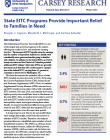
February 28, 2017
The federal Earned Income Tax Credit (EITC) is one of the largest anti-poverty programs in the nation, offering tax credits to low- and moderate-earning families.1 The amount of EITC benefits varies by earnings and the number of dependent children in a family, with considerably more generous benefits going to families with children. In addition to the federal EITC, as of 2015, twenty-six states…
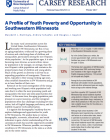
February 14, 2017
Like many rural communities across the United States, Southwestern Minnesota (hereafter SW Minnesota; see Box 1) has an aging population, evidenced by a growing share of seniors and a declining share of children and young adults, particularly among the non-Hispanic white population.1 As the population ages, it is also becoming more diverse, as racial-ethnic minority population is far younger, on…

February 2, 2017
Globally, 2016 was the warmest year on record, surpassing records set in 2015 and 2014,1 and each new record emphasizes the longer-term upward trend. Though not every place on Earth experienced warming effects last year, they were quite evident in many areas. Rising South Pacific sea temperatures caused the largest die-off ever recorded of the coral that composes Australia’s Great Barrier Reef,…
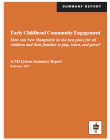
February 1, 2017
In the first few years of a child’s life, hundreds of neural connections form in the brain. When children engage with and receive thoughtful responses from adults, they form strong relationships that bolster healthy growth. Creating conditions (in the home, at school/child care, and in the community) that promote robust brain development and reduce toxic stress early on is likely to be more…

January 31, 2017
Americans are killing themselves at an alarming rate. Nationwide, the mortality rate1, from drug poisoning, alcohol poisoning, and suicide increased by 52 percent between 2000 and 2014. Most of this increase was driven by a surge in prescription opioid and heroin overdoses, but overdoses from other drugs, suicides by means other than drugs, and alcohol-induced deaths also increased over this…
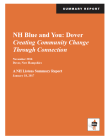
January 18, 2017
Over ninety people from the community squeezed into Flight Coffee for a conversation about community- police relations in Dover. Participants with a range of ages, races, and educational backgrounds were represented at this event. Attendees’ final recommendations and key areas of concern can be used by decision makers to inform next steps, as well as prioritize issues that were identified in a…

January 17, 2017
Editor’s Note: Tom Haines, a journalist and assistant professor of English at The University of New Hampshire, has walked hundreds of miles across landscapes of fuel while researching a book about energy and the environment that will be published in 2018. He served as a Carsey School Summer Research Scholar in 2015, when he walked 50 miles among the open-pit coal mines of Wyoming’s Powder River…
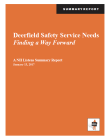
January 13, 2017
Participants at the conversation on the future of safety services for Deerfield expressed a range of perspectives, all of which were recorded by facilitators. Over about two hours, seven small groups―each with a trained facilitator―identified the most important issues. The summary below and the small group notes reveal strong overall themes as well as a rich collection of specific ideas. Included…

December 6, 2016
Counties and states with large shares of uninsured risk having to contend with a range of health and economic impacts, such as reduced workplace productivity, unsustainable demands on emergency departments, higher tax burdens resulting from uncompensated care costs, and deteriorating health care quality due to reductions in public spending.1
In 2013, before the implementation of major…
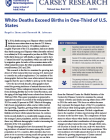
November 29, 2016
In 2014, deaths among non-Hispanic whites exceeded births in more states than at any time in U.S. history. Seventeen states, home to 121 million residents or roughly 38 percent of the U.S. population, had more deaths than births among non-Hispanic whites (hereafter referred to as whites) in 2014, compared to just four in 2004. When births fail to keep pace with deaths, a region is said to have a…
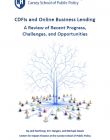
November 10, 2016
In March 2015, the Center for Impact Finance at the Carsey School of Public Policy at the University of New Hampshire convened the 16th Annual Financial Innovations Roundtable at the Federal Reserve Board in Washington, DC.
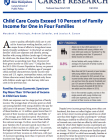
November 10, 2016
Access to quality, affordable child care is critical for American working families, and it is a major focus of efforts to bring about more family-friendly workplaces. In this brief, we analyze families’ child care expenses and identify, among families with young children (under age 6) who pay for child care, the share that are “cost burdened,” defined here as spending more than 10 percent of…

October 25, 2016
In education today, diverse movements such as the “whole child” approach, “conveyor belt” services, and “Let’s Move!” share a common understanding that children bring a host of needs to school and often require more than academic support.1 Students living in poverty often benefit from more intensive support, as they are much more likely to come from difficult circumstances such as less stable…
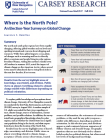
October 11, 2016
The north and south polar regions have been rapidly changing, affecting global weather and sea levels and sparking international concern about shipping and resources. While these global impacts occur, physical changes such as warming and less ice directly affect ecosystems and people living in polar regions. President Obama, visiting the northern Alaska town of Kotzebue in summer 2015, noted the…
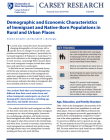
October 6, 2016
In recent years, researchers have documented the changing demographics of rural areas, with a specific focus on changes in racial-ethnic composition and immigration patterns, particularly the increased migration of Hispanics to rural places. In spite of this attention to the changing demographics of rural America, surprisingly little is known about how rural immigrants compare to both their urban…
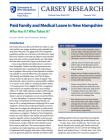
September 20, 2016
Life events such as an illness, the birth of a child, or a parent’s need for care require workers to take extended time away from their jobs. The aging of the New Hampshire population and the rise of women in the labor force mean that more workers in the state are likely to need extended time away from work to provide family care. But taking the leave often means loss of pay or even loss of a job…
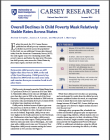
September 15, 2016
Earlier this week, the U.S. Census Bureau published its official poverty estimates noting a decline in poverty across the population.1 In this brief, we use additional Census data released today from the American Community Survey (ACS), the only regular source for estimating yearly child poverty rates at, and below, the state level. We examine child poverty rates across the United States by place…
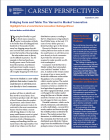
September 8, 2016
Buying food locally is a goal to which many consumers aspire. Local produce is likely to be fresher than food shipped from hundreds or thousands of miles away, less shipping means less reliance on fossil fuels, and local farmers receive the benefits of local spending.
But what makes sense in theory can be difficult in practice. Try, for example, to find and purchase a locally grown carrot. In…
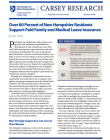
August 31, 2016
Paid family and medical leave helps workers manage their work and family responsibilities by allowing them to take extended time away from work while receiving some wage replacement and without the threat of being fired. Yet, access to paid family and medical leave to care for a sick family member, a new child, or tend to one’s own illness is uneven: workers who typically have access are more…
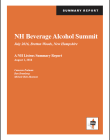
August 18, 2016
In July of 2016, over seventy-five people attended the NH Beverage Alcohol Summit at the Mt. Washington Hotel in Bretton Woods, New Hampshire. Commercial stakeholders initiated the summit, but attendees included stakeholders across the industry including members of the NH State Legislature, the NH Liquor Commission, the NH Department of Resources and Economic Development, the prevention and…
